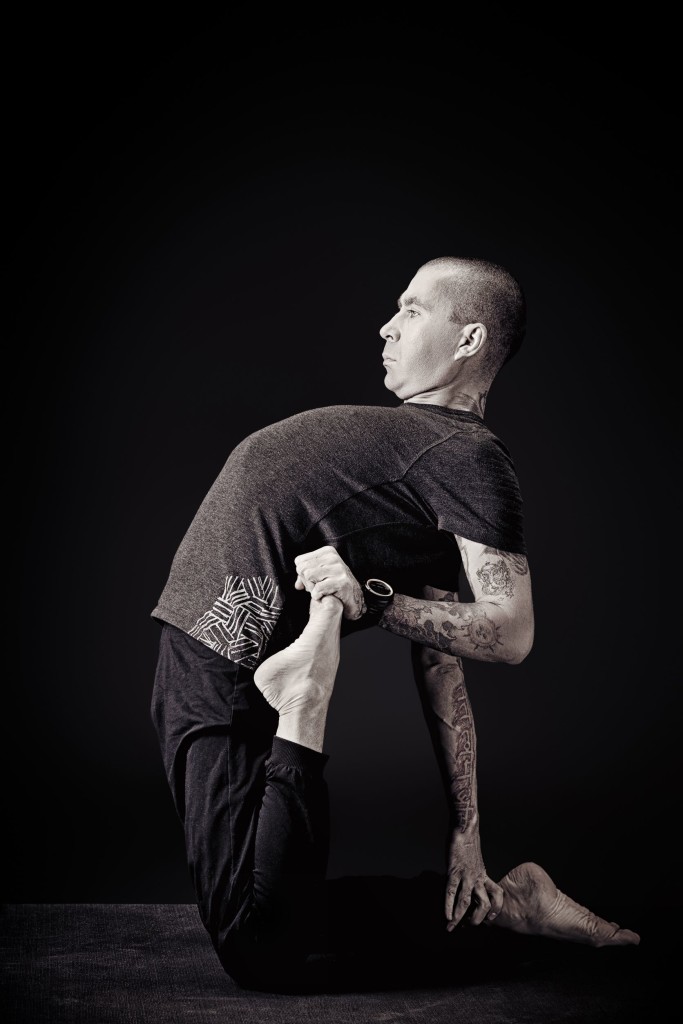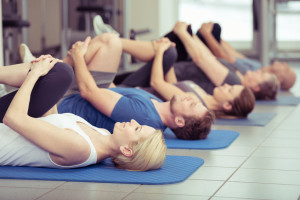Soccer, softball, walking, baseball, lacrosse, golf, tennis, running, skateboarding, rugby, and equestrian sports all swing back into life as soon as it gets warm in the spring, often before the leaves are even fully out on the trees. It can be so exciting to get back outside after a long, dark winter that we forget to think before we jump right in. Let’s take a look at each of the most common spring sports and see what the specific spinal concerns could be, and how to mitigate them, according to Dr. Grigory Goldberg.
- Soccer. While soccer may not involve as much bodily contact as football, it is still a contact sport and, as such, has the potential for serious spinal injury. Popular moves such as headers and tackling are not advised if you have spinal issues. Being in a healthy workout routine with a balance of strength and flexibility training before practices start in the spring is a great way to make sure you’re ready for the rigors of the game.
- Rugby/Lacrosse/Baseball/Softball. These sports are dependent on high-impact collisions between players, whether it’s a tackle, a slide into base, or simply not wearing enough padding; all these factors can present dangers for vertebral well-being. Working with a team and a good coach who has your physical health as a priority is key.
- Tennis. This sport is noncontact (hopefully); however, there are still concerns to be addressed. Tennis requires so much upper body and core strength, combined with lower body agility and speed, that some players end up forgetting to balance their workouts and bodies, resulting in spinal stresses and injuries. Playing indoor during the winter is a perfect way to make sure you don’t lose condition during the offseason.
- Walking/Running/Golf. Generally, having good form is the key to each of these activities. Seeing a professional for lessons or working with a buddy can make sure your spinal alignment and activity stay focused and correct.
- Skateboarding/Equestrian. At first, these two seem like the least likely sports to be paired, but each involves the whole body, often at speeds beyond those of normal running, often with obstacles and, of course, using a nonhuman partner or device. In these activities, whole body workouts that focus on quick reactions and stamina are key to preventing falls and injuries that may lead to minimally invasive spine surgery.
Spring is a great time to get outside, enjoy the weather, and focus on fitness. Follow these tips and you’ll be cool by this summer! Contact us now if you have questions about how to best keep your spine healthy during spring activities.
Advanced Orthopedics and Sports Medicine Institute is a medical practice located in Freehold and Monroe, NJ, our medical professionals are experts in orthopedic surgery, joint replacement, sports medicine, integrative wellness, spine care, physical therapy, and more.
Running a marathon is an incredible undertaking requiring discipline, passion, and lots and lots of preparation. For all the hard work that goes into preparing your body to run a marathon, the sense of accomplishment when you cross the finish line–for the first time or the fiftieth–is unmatched. If you are new to marathon training, take these suggestions to ensure that you train smart and effectively.
- Start Where You Are. It is difficult to train appropriately when you aren’t aware of your current skill level. If you are brand new to running, check with your doctor to make sure you are healthy enough for this sort of exercise and let him or her help you determine an appropriate starting level of intensity. Pushing yourself too hard, too fast can lead to a sports injury.
- Have a Plan and Stick to It. There are plenty of apps and online resources to give runners of all ability levels an effective and appropriate training schedule. This plan will be more than just how much you run and how often. Break your goal of running a marathon into smaller goals you can prepare for, such as running a 5K or half marathon.
- Fuel Properly with Good Nutrition. Even if you are running in part to achieve weight loss, it is important to increase your intake of calories when training to avoid fatigue and muscle loss. Be sure your calorie expenditure (including running) is about the same as your caloric intake. Also, make sure you are eating the optimal amount of protein and other nutrients for your body size, age, and gender.
- Listen to Your Body. Running can take a heavy toll on the bones and joints. If you are experiencing pain, don’t try to tough it out. An unaddressed injury could not only derail your marathon aspirations; it can necessitate surgery, missed work time, and other adverse consequences.
If you have experienced pain while running, an experienced orthopedic specialist at Advanced Orthopedic and Sports Medicine Institute can help determine the exact nature of your issue. Request an appointment with us today to get back to your fitness routine as soon as possible.
Advanced Orthopedics and Sports Medicine Institute is a medical practice located in Freehold and Monroe, NJ, our medical professionals are experts in orthopedic surgery, joint replacement, sports medicine, integrative wellness, spine care, physical therapy, and more.
Walking on the treadmill in the gym, confined to the indoors, can get boring very fast. In order to make exercise a habit, it has to be enjoyable and fun. Hiking is a fantastic way to increase cardiovascular exercise while soaking in the fresh air and sunshine of the outdoors. The uneven surface of an outdoor trail engages more muscle groups than walking on a flat treadmill, making for great strength training and muscle toning as well. Hiking is a fun and exciting way to stay healthy and strong.
Still, for new and veteran hikers alike, there are risks to this form of activity. These risks range from minor inconveniences to life-threatening injuries. Take the following precautions from our New Jersey orthopedic surgeons to keep your hiking safe and enjoyable.
- Gear Up. Proper footwear is essential to safe hiking. While well-fitting, specialized hiking shoes are ideal, other shoes with a thick, deep tread with good traction are also acceptable. Thick socks will help keep your feet comfortable and avoid blisters, as well as keep your feet warm. Dressing in layers is helpful as temperatures can fluctuate throughout your hike.
- Plan Ahead. It is important to know your route ahead of time when hiking and to keep a map and compass with you in the event that you take a wrong turn and find yourself lost. A flashlight can also be helpful. Depending on the length and duration of your hike, you may also consider matches, a first aid kit, and food provisions.
- Check In. Letting someone else know when and where you will be hiking and when you expect to return is advisable, especially because, on some trails, cell service can be limited.
- Stay Hydrated. Like any physical activity, hiking can cause you to sweat, and it is important to drink water continuously throughout your hike to avoid dehydration. As a general rule, it is not safe to drink water found in rivers or streams along the trail. Be sure to keep bottled water with you.
As with any new exercise routine, be sure to consult with your doctor before your start if you are new to hiking. If you are experiencing aches and pains after hiking, an orthopedic specialist can help determine the nature of the problem. Contact Advanced Orthopedic and Sports Medicine Institute today to request an appointment with a NJ physical therapy specialist.
Advanced Orthopedics and Sports Medicine Institute is a medical practice located in Freehold and Monroe, NJ, our medical professionals are experts in orthopedic surgery, joint replacement, sports medicine, integrative wellness, spine care, physical therapy, and more.
Whether you’re recovering from a sports injury or are simply experiencing the annoyances of physical pain from the daily grind of day to day living, there are a few simple movements you can try to help relieve your pain. As contrary as it seems, stretching is your saving grace when it comes to dealing with physical pain. Here we offer a few simple movements to get your muscles and joints moving and relieve common pains. As always, if the pain persists or worsens, call an orthopedic specialist to have it looked at. Stretching will not treat physical injuries or solve underlying conditions.
Simple Movements To Relieve Body Pain:
- Hamstring Floor Stretch: Designed to relieve lower back and leg pain, this hamstring stretch move will loosen the leg muscles and provide relief from cramping, spasms, and generalized aches from overuse. To execute, simple lay on your back with both knees bent. With both hands placed behind the knee, lift one leg at a time for 30 seconds. Lift each leg five or six times and then rest.
- Knee To Chest Stretch: This easy stretch is designed to ease pressure on the glutes and help reduce hip pain. To execute, lay on your back with both knees bent. Place your hands around one knee and pull that leg up to your chin (keeping it bent). Return to the starting position and then move to the other leg. Do four or five lifts on each side for maximum relief.
- Spinal Stretch: Your spine controls nearly all your movements. Stretching the muscles, joints, and ligaments that comprise this lifeline will provide all-over relief from aches and pains. An easy spine stretch involves lying on your back with legs outstretched and your arms spread out. Take your left arm and reach over your body to grab your right knee. Pull that leg over the left side of your body (with the knee bent) and hold for twenty seconds before returning to the starting position. Do the same for the other side. Do the motion between five and six times on each side for maximum effect.
These simple movements should keep you pain-free all summer. Again, if pain persists, is acute, or worsens with stretching, call AOSMI to request an appointment with an orthopedic specialist and have your injury diagnosed and treated.
Advanced Orthopedics and Sports Medicine Institute is a medical practice located in Freehold and Monroe, NJ, our medical professionals are experts in orthopedic surgery, joint replacement, sports medicine, integrative wellness, spine care, physical therapy, and more.
 Leading an active lifestyle has many health benefits, but it does carry one major risk–injury. The most common injuries sustained during physical activity are to the back and neck. Many people assume they will need extensive, painful surgery to return to their pursuits. However, there are other alternatives to surgery for spine and back issues. It is critical to discuss your case with an orthopedic specialist to determine if any of these are right for you. Contact us to request an appointment or learn more.
Leading an active lifestyle has many health benefits, but it does carry one major risk–injury. The most common injuries sustained during physical activity are to the back and neck. Many people assume they will need extensive, painful surgery to return to their pursuits. However, there are other alternatives to surgery for spine and back issues. It is critical to discuss your case with an orthopedic specialist to determine if any of these are right for you. Contact us to request an appointment or learn more.
- Massage – Massage therapy can reduce or alleviate pain, muscle weakness, and range of motion issues, as well as improve function in treated areas. It is often used to treat issues such as chronic pain, neck and back injuries, sciatic pain, arthritis, whiplash, fibromyalgia, stiff neck, sleep difficulties, depression, and anxiety. Working with a professional massage therapist can also speed rehabilitation from existing injuries, working holistically with other treatments.
- Acupuncture – Acupuncture treatments consist of the use of small needles, placed throughout the body to rebalance qi, the body’s energy force. Many conditions respond well to acupuncture, including muscle spasms, sprains and strains, fibromyalgia, joint pain, arthritis, and headaches. Acupuncture has been practiced for centuries and can be used in conjunction with other therapies.
- Bracing – As the name suggests, bracing involves the use of specialized braces to support various bone structures that may be compromised by injury or illness. It is primarily seen in the treatment of spinal and knee issues.
- Physical Therapy – Physical therapy is a cluster of treatments, all intended to replace the need for surgical intervention. The treatment often consists of stretching, massage, hot and cold therapies, manual therapy techniques for strength, flexibility and pain reduction, as well as strength training to prevent future re-injury.
- Epidural and Transforaminal Steroid Injection – Epidural steroid injections, or ESI, are injections of anti-inflammatory steroids into a very specific area of the spine called the epidural space, guided by x-ray fluoroscopy. This treatment reduces pain and inflammation, and can aid in diagnosing specific injuries. Transforaminal steroid injection differs only in the location of the injection, being more targeted to a specific nerve ending.
Sports injuries and other traumas to the body are no longer an instant prescription for surgery. Any or all of the above options can provide full and lasting recovery in many cases, as well as a quick return to the activity of your choice!











